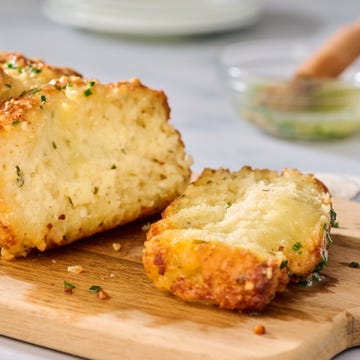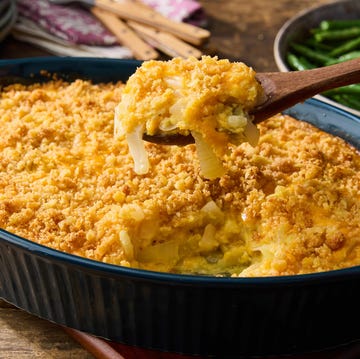Every Easter, children and adults alike eagerly search for colorful eggs hidden by the Easter Bunny on Sunday morning. Whether made of chocolate, painted with bright designs, or stuffed with little surprises, Easter eggs are a beloved tradition that bring so much joy to the beloved holiday.
But have you ever stopped to wonder where this quirky custom comes from? Why do we associate eggs with Easter, and how did this tradition evolve from old rituals to the modern-day candy-fueled extravaganza we know and love? The answer is as layered as a perfectly decorated egg.
So, before you grab your Easter baskets and race to fill them with eggs adorned in pastels and packed with goodies, read on to learn the origins of Easter eggs. You'll find everything you need to know about the spring symbol, including the story behind the first decorated Easter eggs and how exactly Easter egg hunts originated. It's all pretty eggs-traordinary!
What Is the Story Behind Easter Eggs?
The tradition of Easter eggs actually has roots in both Christian and pre-Christian customs. In many ancient cultures, eggs symbolized new life and fertility, representing the arrival of spring. Early Christians adopted this symbolism, associating eggs with the resurrection of Jesus Christ.
During Lent, a period of fasting before Easter, eggs were historically not to be eaten, so they were often hard-boiled and stored for later consumption. When Easter arrived, people would decorate and share them as a celebration of Christ’s resurrection and the end of fasting. Over time, this tradition evolved, leading to modern Easter egg hunts, and the decorated Easter eggs we use today.
Are Easter Eggs a Pagan Tradition?
While Easter eggs did come to have Christian symbolism representing Jesus' resurrection, the tradition actually stretches back much further. Long before chocolate bunnies and marshmallow chicks took over store shelves, cultures around the world were using eggs in celebrations of fertility, renewal, and the changing seasons. Ancient Egyptians, Persians, and Romans all viewed eggs as powerful symbols of rebirth, often exchanging them as gifts during spring festivals.
Some historians even believe Easter eggs came from Anglo-Saxon festivals in the spring to celebrate the pagan goddess Eostre. The goddess, who is also believed to be the namesake of Easter, represented the dawn in spring. So, in order to celebrate her, eggs were buried and eaten during the festival as they represent new life after winter. Many other pagan traditions from the festival of Eostre, such as hot cross buns and the Easter bunny, were adopted by Christian missionaries to celebrate Christ and encourage conversion.
Where Did Easter Egg Hunts Originate?
Believe it or not, Easter egg hunts hatched in Germany back in the 17th century! Some researchers say the tradition is linked to the German folklore of the Osterhase (Easter Hare), a mythical creature that would lay colorful eggs for well-behaved children to find. Sound familiar?
Though the practice of hiding and hunting for eggs likely stems from older European spring fertility rituals, protestant reformer Martin Luther would organize egg hunts for children, with men hiding the eggs and women and children searching for them—possibly representing the discovery of Christ’s empty tomb.
By the 18th century, German immigrants brought the tradition to America, where it became widely popular. In the 19th century, European candy manufacturers began to make egg-shaped chocolates and candies to celebrate Easter. In 1878, the White House held its first Easter egg roll and the tradition still continues today!
Macie Reynolds is the assistant editor of E-Commerce and SEO for The Pioneer Woman.















